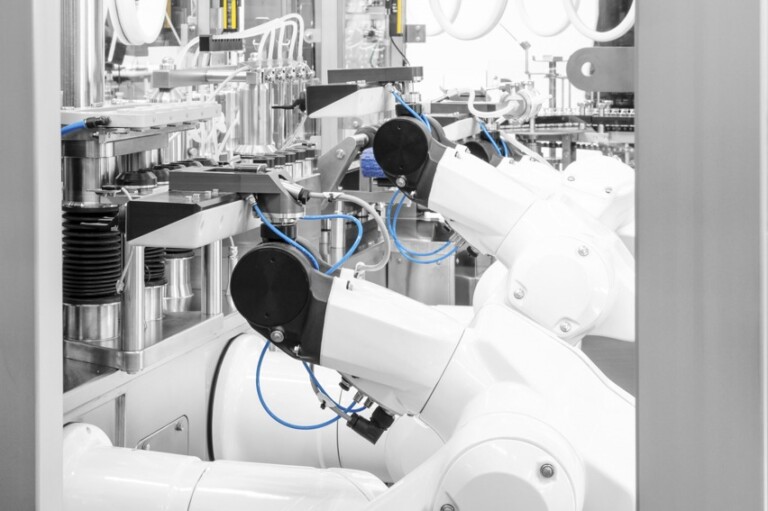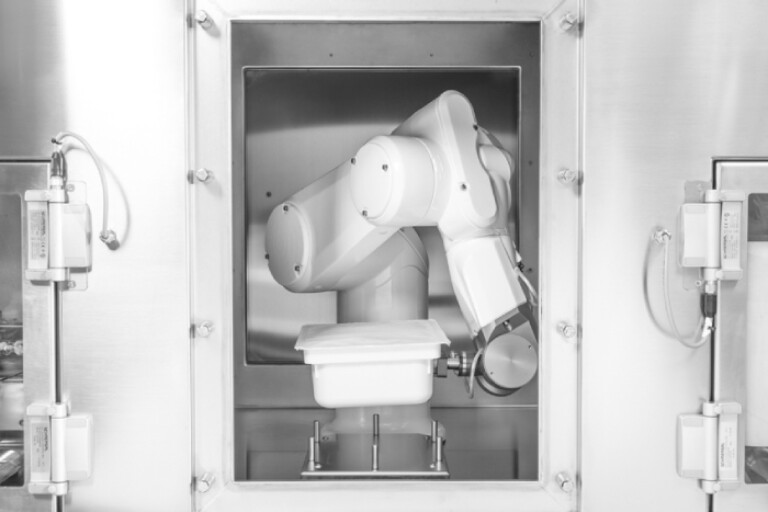About us
Aseptic Processing
The Aseptic Processing evolution in the midst of new markets and innovations.
THE YEAR WAS 1989: THE NINETIES WERE DRAWING NEAR AND STERILINE WAS ESTABLISHED
One era was ending and another was about to begin to accompany us to the threshold of the new century. Just like all transition periods, there were many contexts whose dynamics questioned their very own backgrounds. As regards the sector of complete aseptic processing production lines for the pharmaceutical industry, the panorama of the companies in business was not much different from what we find today.
As regards the technological context, the market between the 80s and 90s was by and large distinguished by the presence of electromechanical machinery controlled manually by a set of switches. The first PLC-controlled machinery began to timidly appear on the scene in an automation logic that was to characterise the years to come up until recent times.
What certainly evolved over the years was the corporate context. In fact, if in recent years the market has been distinguished by large industrial groups organised in a holding logic like the Sanofi-Aventis group, the market between the end of the 80s and the beginning of the 90s was instead characterised by smaller companies. Focusing on specialization, advanced engineering and collaborative partnership, Steriline aims at becoming a preferred aseptic processing manufacturer for the pharmaceutical industry. As per its mission, Steriline is committed to provide customers with distinct, tailored and durably reliable solutions to help them meet a growing demand for improved efficiency, consistent quality and enhanced safety across the sector.
THE 90S ARRIVED: THE MARKETS NEEDS AND THE PRODUCTION CONTEXT CHANGED.
And so, in 2007 Steriline launched its first complete line. It was a sort of investment for which a specially made structure and company were created, and it was a hard to quantify investment. The design stage was, in fact, not preparatory for prototyping, but rather directly for sales.
The design of a complete line was a strategic choice that reflected the approach of the market that was gearing up to be able to meet the market’s demand in this direction. The previous context, on the other hand, consisted of lines put together with different pieces of machinery produced by different companies.

THE TIMES AND THE REQUIREMENTS OF THE MARKET AND COMPANIES WERE CHANGING. AS WAS THE INVESTMENT FRAMEWORK.
In terms of percentage, research and development investment volumes have remained basically unaltered compared to 30 years ago. The target has undoubtedly changed today. If efforts before were focused on a “mechanical” approach, today automation technology in a 4.0 logic is the main driver in research and development investment strategies.
The advent of robotics made an enormous impact on aseptic processing, and Steriline was probably able to take action before what then became the market standard. The impact was primarily felt on the low-speed machinery. Indeed, the demand of the market - and especially that of the pharmaceutical industry - is to be able to work on different types of glass, vials or syringes using the same machine. And this is a demand that robotics is capable of meeting (whereas traditional mechanics would spend too much changeover and preparation time) precisely because flexibility, and not speed, is the determining factor.
STERILINE AND THE PHARMA 4.0 CONTEXT
The production of machinery equipped with electronic diagnostics via the Internet is the main path on which Steriline guarantees non-stop growth in a manner different from the past, but certainly with progress consistent with the needs of a market like that of customised drugs.
It is a production context consisting of small batches, with a higher production cost and a resulting use of increasingly technological machinery with a view to optimising processes. On the other hand, the machinery for mass production of vaccines and antibiotics, or generic medicines, form the bulk of the current market relating to the developing countries.


